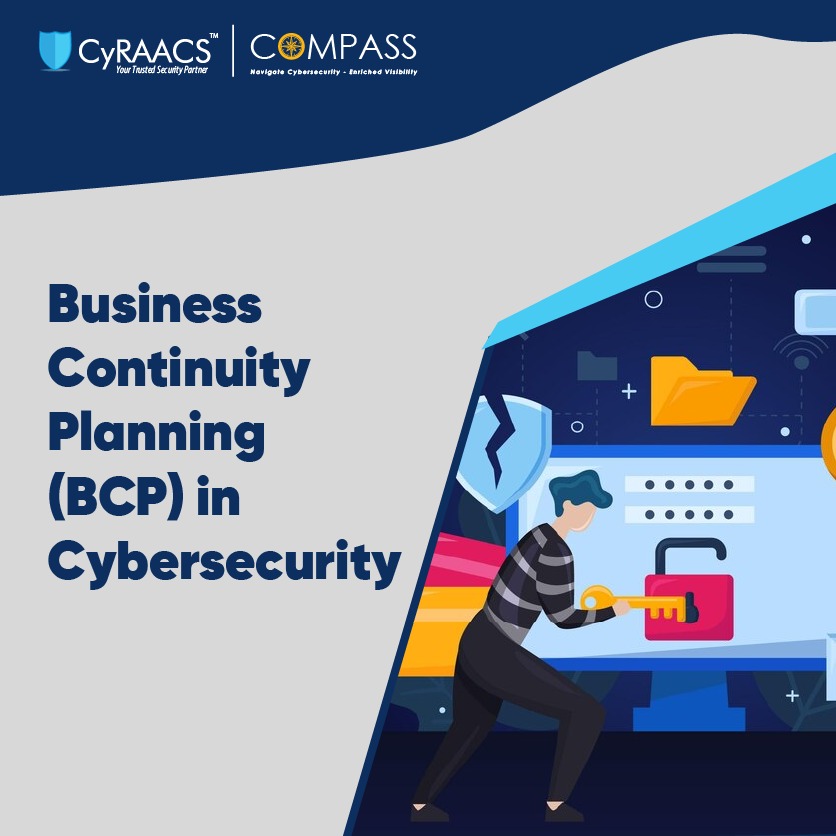As cyber threats grow in complexity and frequency, businesses face increasing risks that can disrupt operations, erode customer trust, and lead to financial losses. Ransomware attacks, data breaches, and system failures not only compromise sensitive information but can also result in regulatory penalties and reputational damage. To mitigate these risks, organizations must integrate Business Continuity Planning (BCP) into their cybersecurity strategies. A well-structured BCP ensures rapid incident response, minimizes downtime and maintains critical business functions even in the face of cyber disruptions. By proactively identifying vulnerabilities, implementing recovery protocols, and regularly testing response strategies, businesses can enhance resilience and safeguard long-term sustainability.
Why Cybersecurity Should Be a Core Focus of BCP
Incorporating cybersecurity into BCP is essential for the following reasons:
- Reduces Downtime: Cybersecurity-focused BCP helps businesses recover quickly, ensuring continued operations after incidents.
- Prevents Financial Losses: Proactively addressing cyber threats minimizes the risk of costly data breaches and ransomware payouts.
- Ensures Regulatory Compliance: Meeting standards like GDPR, HIPAA, and ISO 27001 avoids penalties and legal complications.
- Builds Customer Trust: Demonstrating strong cybersecurity measures reassures customers of data protection and strengthens loyalty.
Key Components of Cybersecurity in BCP
1. Risk Assessment & Threat Analysis
- Critical Systems Identification: Pinpoint vital systems, data, and applications at risk.
- Threat Assessment: Evaluate common threats such as malware, phishing, and insider attacks.
- Impact Analysis: Analyze the potential consequences and scope of a cyberattack.
2. Incident Response & Recovery Plan
- Cyber Incident Response Team (CIRT): Assemble a dedicated team to detect, respond to, and mitigate cyber incidents.
- Protocols: Establish procedures for swift detection and response to minimize damage.
- Disaster Recovery Plans (DRP): Design detailed strategies to restore IT systems and recover lost data effectively.
3. Data Backup & Redundancy
- Automated Backups: Schedule regular backups to secure data in multiple locations.
- Cloud Storage Solutions: Utilize reliable cloud services for fast data restoration.
- Infrastructure Redundancy: Implement systems to ensure uninterrupted access to critical data.
4. Access Control & Authentication
- Multi-Factor Authentication (MFA): Strengthen user access to critical systems.
- Privileged Access Management (PAM): Strictly limit administrative access.
- Access Reviews: Regularly audit and update access permissions.
5. Employee Training & Awareness
- Cybersecurity Training: Educate employees on recognizing and mitigating threats.
- Simulated Phishing Drills: Conduct exercises to enhance employee vigilance.
- Incident Reporting: Train staff on the importance of reporting potential security breaches immediately.
6. Communication & Coordination
- Defined Protocols: Establish clear communication channels for notifying stakeholders during incidents.
- Coordination: Collaborate with law enforcement and cybersecurity experts to ensure legal compliance.
- Vendor Resilience: Confirm third-party vendors have robust cybersecurity measures.
7. Testing & Continuous Improvement
- Penetration Testing: Identify vulnerabilities in systems and applications.
- Tabletop Exercises: Simulate cyberattack scenarios to test response effectiveness.
- Regular Updates: Refine and improve BCP strategies based on emerging threats.
Crafting Your Cybersecurity-Focused BCP
Developing a cybersecurity focused BCP involves proactive planning, regular testing, and ongoing adjustments to address evolving risks. Key steps include:
- Identifying critical assets and systems.
- Conducting risk and impact analyses.
- Designing incident response protocols.
- Implementing secure backup and redundancy solutions.
- Ensuring employees are trained to prevent and respond to cyber threats.
- Testing plans regularly to identify gaps and improve strategies.
Strengthening Cyber Resilience with Tailored Business Continuity Solutions
CyRAACS is committed to strengthening organizational resilience through robust and sustainable cybersecurity solutions, including comprehensive Business Continuity Planning (BCP) services. In an era where cyber threats, operational disruptions, and regulatory mandates pose significant challenges, having a well-structured BCP is critical for ensuring business continuity, minimizing downtime, and maintaining stakeholder trust.
Our tailored approach goes beyond traditional frameworks by integrating cybersecurity, risk management, and compliance into a holistic continuity strategy. We work closely with organizations to assess vulnerabilities, design resilient recovery plans, and implement automated response mechanisms, ensuring seamless operations in the face of disruptions.
By aligning solutions with client environments and industry-specific needs, CyRAACS enables businesses to fortify their resilience while focusing on core operations with confidence.
Conclusion
Incorporating cybersecurity into your Business Continuity Plan is not just a strategic decision but a necessity in today’s cyber-threat environment. Organizations that prioritize cybersecurity within their BCP can reduce downtime, prevent financial losses, and build customer trust while ensuring long-term operational resilience.
A well-executed BCP reinforces your organization’s ability to withstand and recover from cyber incidents, positioning your business to thrive in the face of uncertainty. Whether facing cyber incidents, system failures, or unforeseen crises, CyRAACS empowers businesses with customized, agile, and future-ready BCP solutions, allowing them to focus on their core operations with confidence. Ready to build a robust cybersecurity focused BCP? Let’s get started!

